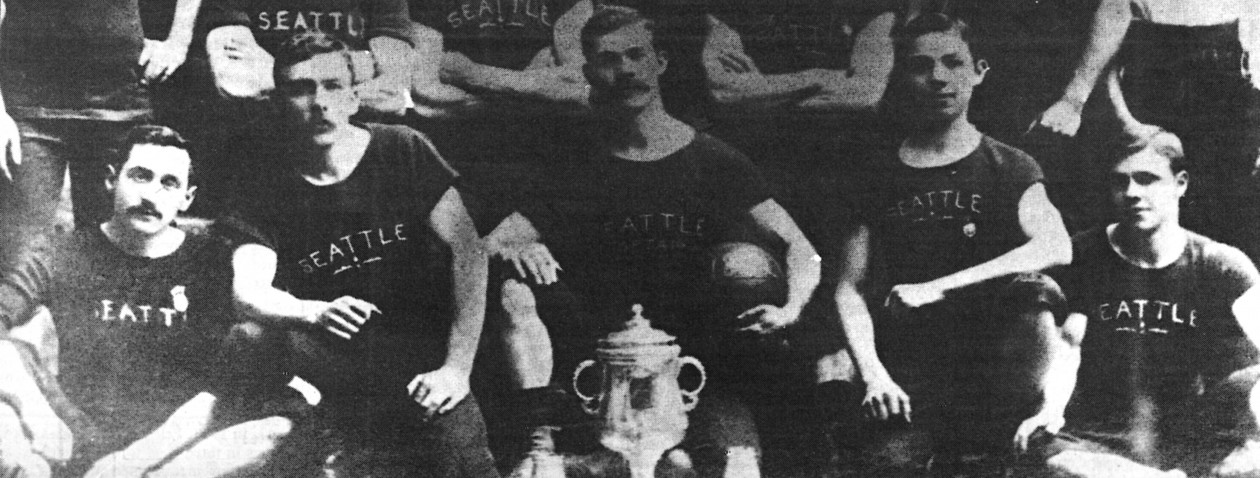Behemoth by the Bay
Awaiting Washington in the City by the Bay was a team with a history of pummeling the opposition. San Francisco had earned bids in six of the first nine years of the NCAA tournament, and became the first West Coast program to win the championship two years earlier, in 1966.
Under Stephen Negoesco, the Dons were routing foes with regularity. Their savvy international contingent twice scored 10 goals and was averaging 5.5 through the first 10 games. They had leveled 63 shots at Cal.

San Francisco was cultured, experienced, rested and playing at home. Coming off a loss to their arch-rival, San Jose State, a few days earlier, they were also in the mood to deliver a beating.
“USF had just gotten beat, and they were not in the best of moods,” UW keeper Mike Jones confirms. “They had a good team and some African players and they had (future USMNT and Sounder) Mike Ivanow for their goalkeeper.”
Ivanow was the least of the Huskies’ worries. Up front the Dons featured an explosive threat in Alex Roboostoff and All-American Torgier Hague pulling strings from midfield. Together, Hague and Roboostoff combined for 36 goals.
“They actually had a couple players off the Mexican Olympic development team,” notes Washington’s Joe Zohn. “They were a very significant team at the time.”

Perhaps the only factor in Washington’s favor was the element of surprise. After all, USF awoke matchday not knowing which opponent was en route to SFO. But it didn’t really matter; the Dons were loaded for bear.
Zohn takes stock of the situation.
“So we went down with no goalie and we’re playing USF, who had played for the national championship a couple times in the previous five years, says Zohn. “We knew it was essentially a 16 seed versus a 1. We knew it was going to be a mismatch. I was thinking we would be able to compete, but my teammates said, No, we’re going to get our ass kicked. And they were right.”
Want to Play in Goal?
When the Huskies’ plane touched down, Coach Mike Ryan still held out a glimmer of hope that Jones would play between the posts.
“We changed at their facility and bused out to Balboa Park,” says Jones. “Our trainer taped up my wrist. I warmed up and tried to play, but anything that came near it caused a lot of pain. ”
In the opening minutes, although on their heels, the Huskies managed to hold off the Dons.
“I started in goal and the game was tight for the first 10-15 minutes,” notes Jones. “I lasted until the first hard save and then couldn’t continue. Mike decided we didn’t want to hurt it anymore, (but) we didn’t have back-up goalkeeper.”
 That’s right. There was not a second keeper on the UW roster that entire season.
That’s right. There was not a second keeper on the UW roster that entire season.
In the biggest game for the program to date, Ryan pleadingly asked for volunteers, field players, to take a turn in goal. Jones, now over on the sidelines, cringed. “The first guy they put in there ducked when the first couple shots came in.”
Effectively Washington was under siege in its own half. The Huskies were an athletic, albeit kick-and-rush team. USF a skilled, possession-oriented side, would be in possession for an estimated 85 minutes.
The UW goalmouth was no place to take refuge. Between crosses and shots (USF was credited with firing a school-record 83 attempts on goal; that’s eighty-three) it was downright dangerous to be in goal that afternoon. Once a stand-in keeper was properly shell-shocked, he was lifted by Ryan, who used four different players.
In the final half-hour of the first half it rained goals. The deficit seemed to double every few minutes. By halftime Washington players lost count, but it was likely already 10-nil.
Brother, Can You Spare Your Dog?
“At halftime we were all standing around, looking for an escape route,” admits Jones. “A guy went out on the field with his beautiful Great Dane, and he would kick the ball at goal and the Great Dane would knock it away with his head. We thought maybe we’d get (the dog) to play the second half.”
 Zohn recalls the scenery being serene–as long as one wasn’t wearing purple and gold. “Balboa Park was a beautiful setting. It was just unfortunate that we were overmatched, especially being without our keeper.”
Zohn recalls the scenery being serene–as long as one wasn’t wearing purple and gold. “Balboa Park was a beautiful setting. It was just unfortunate that we were overmatched, especially being without our keeper.”
The Dons didn’t score as much in the second half. Jones contends they backed off. But in some ways toying with a foe is far more cruel. The Huskies were credited with a single shot. Hague and Roboostoff each scored five times. In the end, Washington trudged off the field, beaten 16-0.
The Huskies gathered up their gear and headed for the airport. There wasn’t money to stay the night and, really, who would want to stick around after such a debacle.
The flight home was thankfully short.
“I remember Rob (Shoemaker) and I on the plane, trying to convince the Western Airlines flight attendant that we were 21 years old (they were not) because that was back when they used to serve free champagne,” laughs Jones. “After getting beat 16-0, that was the least we could get out of the whole deal.”
For the Huskies’ top scorer, John Goldingay, a senior, it was his final game for the Purple and Gold. “It was just a flipping nightmare. I feel like we got up, got on a plane, went to San Francisco and we got just hammered.”
Next: Series concludes with finding the silver lining from a humiliating situation.
